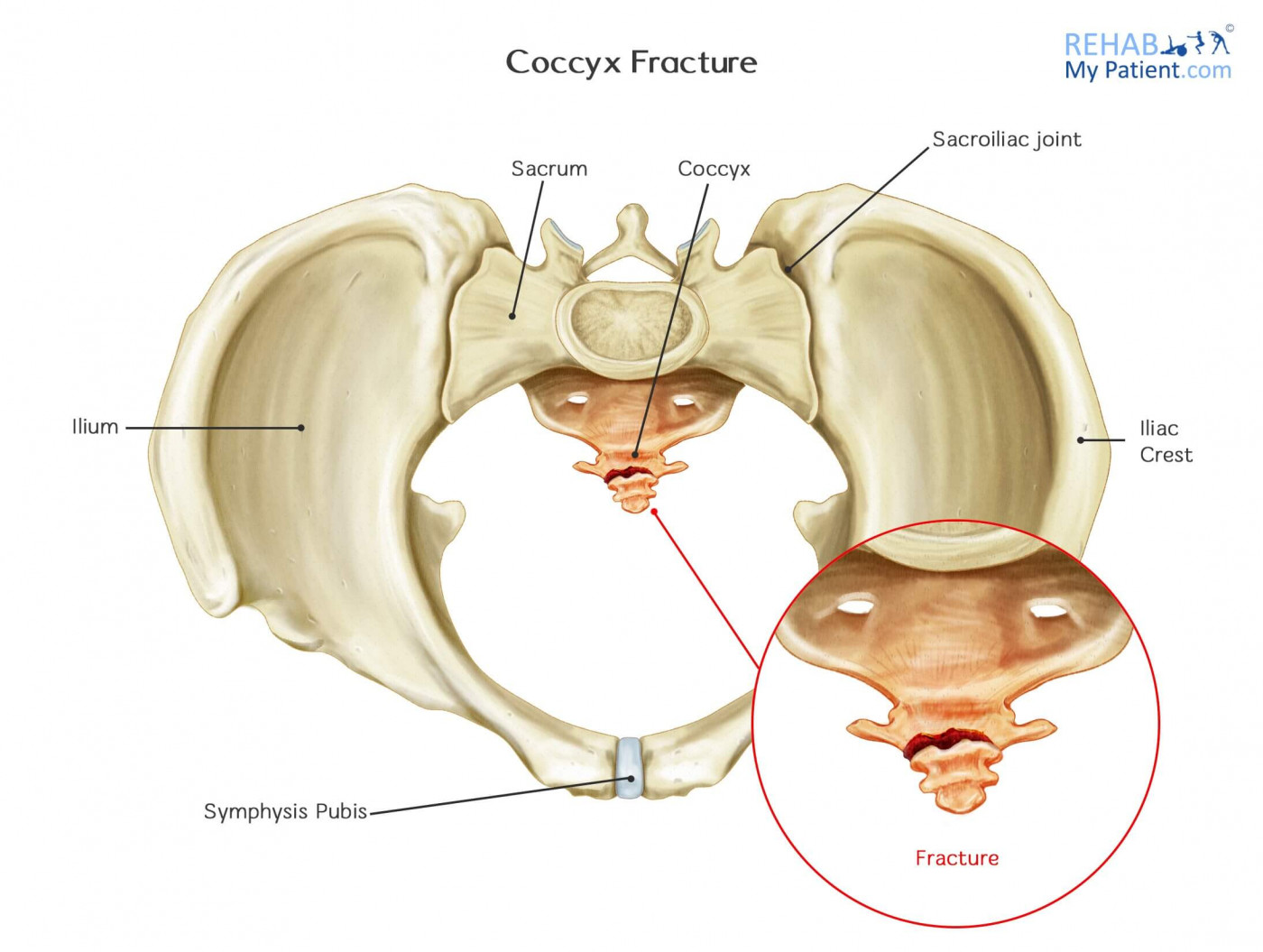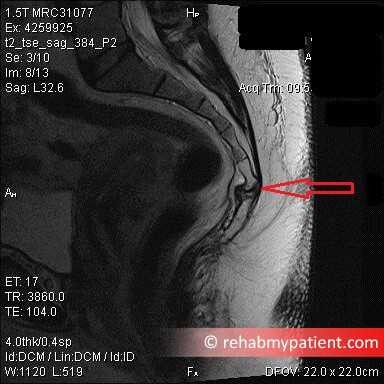
Fracture to the coccyx is typically caused by trauma, most commonly slipping and landing on your tailbone. It is possible to fracture, dislocate or bruise the coccyx. Even though they may be slower to heal, most of the injuries to the coccyx can easily be managed by using conservative treatment.
The coccyx is the triangular bone that is located at the base of the vertebral column. Three to five segments make up the bone, and it is held securely in place with ligaments and joints. Some coccyx injuries will occur in female because the pelvis tends to be a lot broader, so the coccyx is exposed more than that of the male counterparts.
The most common way to break or fracture the coccyx is from falling down steps, and the step catching the tailbone. Other common ways are from slipping on ice, where your feet very quickly slip forwards causing people to land on their tailbones.
Coccyx fracture is not easily determined without an X-ray, as bone bruising can also occur. But if the coccyx pain was caused from a fall where you land heavily on your tailbone, it’s likely you may have a fracture.
Coccyx Fracture Anatomy
Coccyx fractures are essentially broken tailbones. A coccyx is the absolute lowest part of the spine or the backbone. It is triangular and small in shape. It contains four fused vertebra. Most of the time, there is a small amount of movement and it curves slightly from one end of the spine and into the pelvis.


An MRI Scan Showing a Coccyx Fracture
How to Treat a Coccyx Fracture:
- Avoid Prolonged Sitting
Avoid sitting in the same position for an extended period of time. When sitting, you want to avoid sitting on a hard surface. Alternate sitting on both sides of your buttocks. Lean forward to help direct the bulk of your weight away from the tailbone. Use a cushion to help soften the chair.
- Ice
When you suffer with a traumatic injury, you can use ice on the area for 5-10 minutes at a time and ask your therapist how many times per day to use the ice. Use this method for the first few days after the injury occurs to reduce inflammation and bruising.
- Anti-Inflammatory Medication
Take an anti-inflammatory medication to reduce pain and to help improve your ability to roam about freely. Avoid taking these medications if you have a history of kidney disease, a history of gastrointestinal bleeding or if you are taking blood thinners. A safer bet is to take acetaminophen, which will help to reduce the pain, but it won’t address the inflammation. Always ask your doctor first about taking anti-inflammatories, and if you are unsure, use ice as a first priority.
- Doughnut Cushion
Purchase a doughnut cushion for you to sit on. Since it has a hole in the middle of the cushion, it helps to prevent the tailbone from coming in contact with a flat surface.
- Electrotherapy or Acupuncture
Low frequency ultrasound can be useful to speed up bone repair, and acupuncture can also help reduce inflammation, reduce pain and stimulate blood flow to help healing.
Tips:
- Direct blows to the tailbone, such as falling down the stairs, slipping on ice, or during contact sport, can cause the coccyx to become injured.
- Childbirth can cause the coccyx to become injured or fractured.
- Falling onto the tailbone when in a seated position, often against hard surfaces, is considered another common way to injure to the coccyx.
- Some of the less common injuries to the coccyx include that of compression of nerve roots, bone spurs, local infections, tumors and injuries to some of the other parts of the spines.
- Repeatedly straining or imposing a great amount of friction to the coccyx, such as that of rowing or riding a bike, can cause the coccyx to become injured.
- Instances occur where the injury to the coccyx is not known.
Sign Up
Sign up for your free trial now!
Get started with Rehab My Patient today and revolutionize your exercise prescription process for effective rehabilitation.
Start Your 14-Day Free Trial